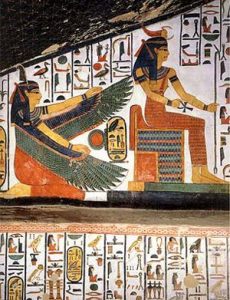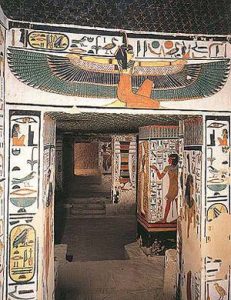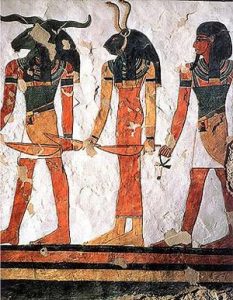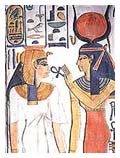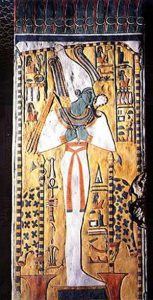Nefertari: Light of Egypt
Organized in collaboration with The Getty Conservation Institute, 130 works from the British Musuem, Louvre, Museo Egizio di Torino, Museo Egizio di Firenze and Biblioteca Reale di Torino.
October 06 1994 / June 05 1995
Roma – Palazzo Ruspoli (380.000 visitors)
Torino – La Promotrice (200.000 visitors)
Bari – Castello Svevo (220.000 visitors)
Venezia – Museo Archeologico (300.000 visitors)
Catania – Le Ciminiere
Catalogue – Leonardo Arte
- Tomba di Nefertari
- Tomba di Nefertari
- Tomba di Nefertari
- Tomba di Nefertari
- Tomba di Nefertari
- Tomba di Nefertari
The exhibition “Nefertari: Light of Egypt”, organized by The Getty Conservation Institute, is above all a tribute to Nefertari, the fascinating queen and favoured wife of Egypt’s greatest pharaoh, Ramses II, who elevated her to the status of a deity.
Set within an extraordinary museum context specifically created for this exhibition, visitors are guided through an extensive journey in search of Nefertari’s eternity. Starting with the discovery of her tomb by Schiaparelli, the head of the Italian mission in Egypt and director of the Egyptian Museum in Turin from 1894 until his passing in 1928, the exhibition illustrates the splendour of the reign of Ramses II, a great builder and conqueror.
Utilizing cutting-edge technologies, visitors can explore Nefertari’s entire tomb through virtual reality. Thanks to an innovative system developed by ENEL and INFOBYTE, visitors can travel through time and space, witnessing the tomb in its current state and before conservation. This allows them to experience the excitement of a great discovery, much like Schiaparelli did 90 years ago, reliving the magical atmosphere of Ancient Egypt. Additionally, the exhibition features 130 works, including artifacts from Nefertari’s original funerary equipment, amulets, ushabti (small and precious funerary statuettes), jewellery, as well as the Queen’s sandals and other everyday objects from the prestigious collections of Louvre, British Museum, Egyptian Museum in Turin, Royal Library of Turin, and the Archaeological Museum of Florence.
Many of the objects on display are exhibited for the first time in Italy, and some have been specially restored for this event. This unique cultural heritage could have disappeared entirely if not for the efforts of the Egyptian Antiquities Organization and The Getty Conservation Institute. In 1986, they embarked on the most significant effort to recover and preserve ancient Egyptian paintings. The success of projects like this is possible through a synthesis of research, specialist training, on-site work, and a network for updating, exchanging, and disseminating information. The Getty Conservation Institute promotes both the conservation of artistic assets and public awareness of the importance of conservation efforts to safeguard a cultural heritage that is an inheritance for future generations.
The exhibition also presents documentation of the various phases of the six-year conservation work, from 1986 to 1992, carried out under the skilled direction of two universally recognized specialists, Paolo and Laura Mora. They are Italian professors and founders of the Central School of Restoration, who aimed to save the paintings while intervening as minimally as possible, making the restoration almost imperceptible. The exhibition also illustrates the construction methods of tombs and the tools used in Pharaonic times by ancient builders, alongside those used by modern conservators. This highlights how both ancient and modern contributions have preserved Nefertari’s immortality.
The exhibition allows visitors to witness the incredible richness of Egyptian culture and civilization, admiring the practicality of ancient builders’ work and the skill of contemporary conservators. It also involves the audience in the event, as the perpetuation of Queen Nefertari’s image is entrusted to each of us. It is our responsibility to keep the memory alive and ensure that, for posterity, works of art remain a vibrant testimony.
Important sponsors contributed to the realization of this exhibition: Assicurazioni Generali, Banca del Fucino, CTS (Company for the Conservation of Cultural Heritage), ENEL, Fondazione Memmo, The Getty Conservation Institute, IGP (General Publicity Company), Leonardo Arte for the catalog and promotion, and Magia di Luna by St. André (jewellery with lunar phases).

